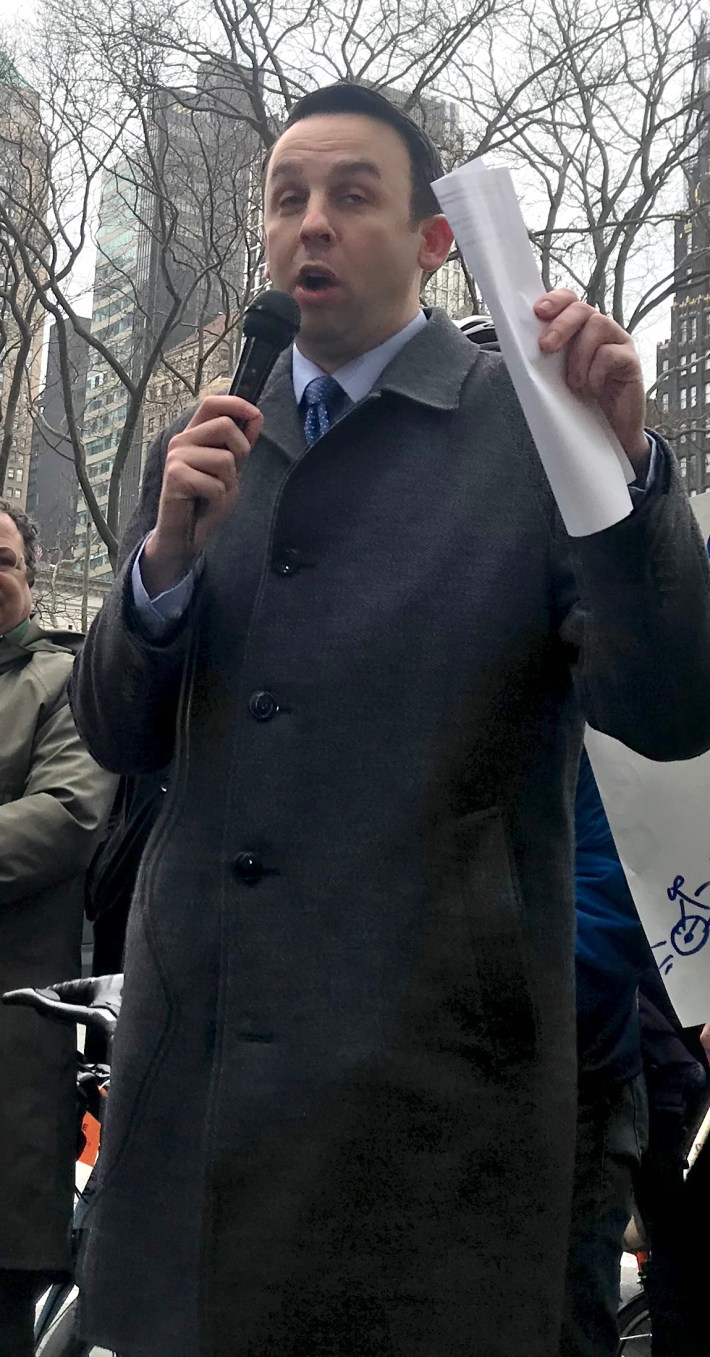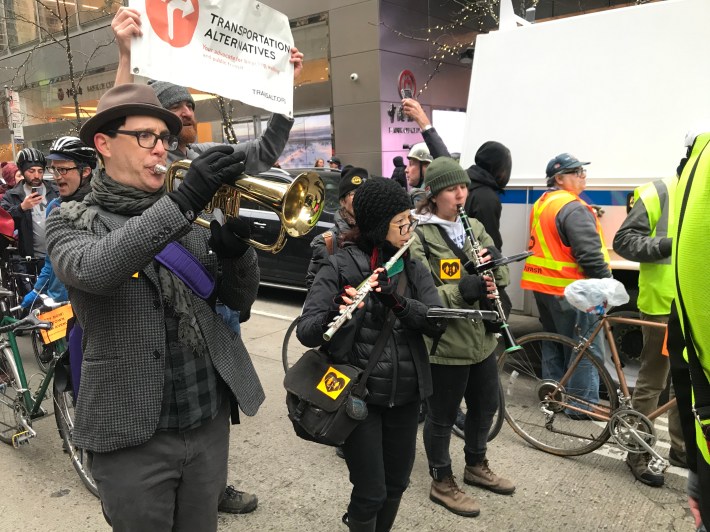There's a bike lane in their mind that they'd really like to ride.
Two dozen street safety advocates marched up Sixth Avenue on Tuesday morning singing Talking Heads' 1985 hit "Road To Nowhere" to demand that the Department of Transportation finish the protected bike lane on the avenue so that there is no longer a dangerous gap between 33rd Street and the entrance to car-free Central Park at 59th Street.
The most recent expansion of the Sixth Avenue lane, between 14th and 33rd streets, was finished in October, 2016 — but the remaining gap south of Central Park is "an affront" to anyone trying to bike safely through the area, said Transportation Alternatives' Deputy Director Ellen McDermott.
Manhattan Community Board 5 has been asking the Department of Transportation to study a redesign of Sixth Avenue since 2013. There's no apparent community opposition to this vital safety improvement for cyclists, said Janet Liff, a CB2 member and co-founder of the Neighborhood Empowerment Project.
"We know the community wants it, we've collected over 20,000 signatures in support of it and we've gotten 200 businesses to support it," she added.

Filling the gap would give the city a protected bike lane from Greenwich Village to Harlem — and it's necessary for basic safety. Protected bike lanes make roadways safer for all users, city statistics show.
For instance, in the nine months before the city built the protected bike lane on Sixth Avenue between 14th and 34th Street, there were 350 crashes, injuring 76 people. In the same nine-month period a year later — after the lane was finished — there were 320 crashes (nearly 10 percent less), injuring 72 people (or 5 percent fewer).
And there are lots of crashes on the unprotected portion of Sixth Avenue. According to city stats, there have been 1,779 collisions in the stretch since January, 2017, injuring 64 cyclists, 90 pedestrians and 108 motorists, and killing one pedestrian, city statistics show. That's an average of 1.6 crashes every single day along just 25 blocks of one roadway.
Even with the protected bike lane further south though, Sixth Avenue isn't necessarily as safe as it can be. Cyclist Robyn Hightman and pedestrian Michael Collopy were both killed on Sixth Avenue and 23rd Street in 2019, because the protected bike lane and pedestrian islands haven't changed the basic math: 88 percent of the roadway (and 75 percent at the corners) is devoted to moving and storing cars and trucks, even though pedestrians and cyclists often outnumber cars.
City Council Member Keith Powers told Streetsblog that Tuesday's demonstration was focused on getting the DOT to finally commit to building a protected bike lane all the way to 59th Street, but said that he could see room for an even more complete street that provides safer pedestrian passage as well.
"There's a high demand for a bike lane here, but this is a perfect area ... to expand some of the sidewalk and curb space to give people an easier way to get around the streets," Powers said.
The good news? Activists may get to swap out one Talking Heads hit for another, "This Must Be The Place": Brian Zumhagen, a spokesperson for the DOT, said that agency officials are "developing a plan for this corridor and hope to present a proposal to CB5 this spring."
Correction: An earlier version of this story had the wrong Manhattan community board on which Janet Liff serves. It is CB2.







